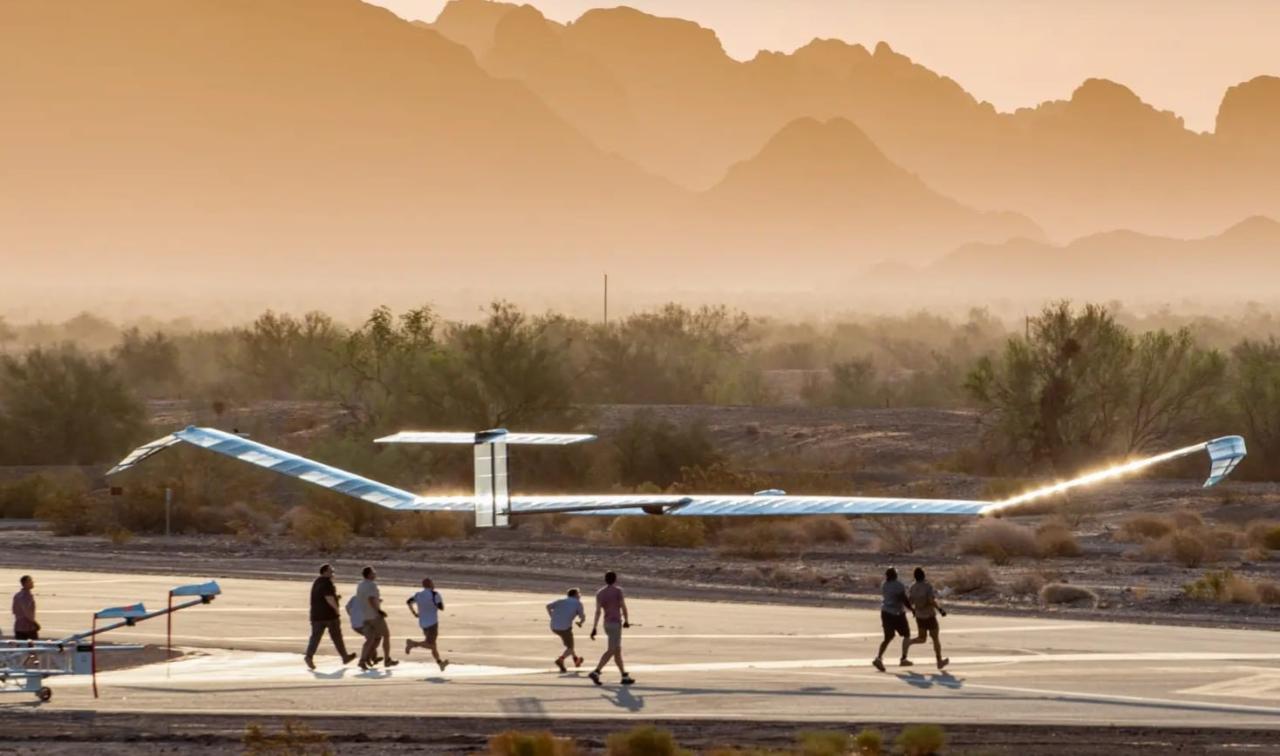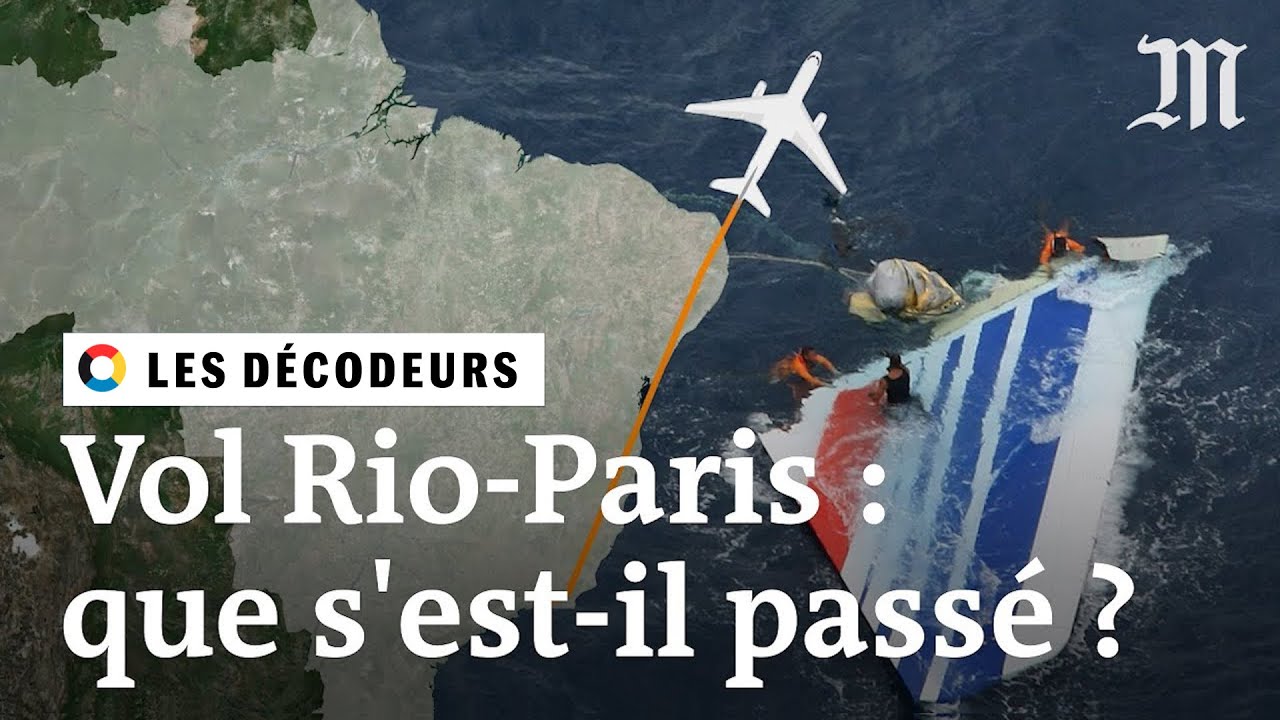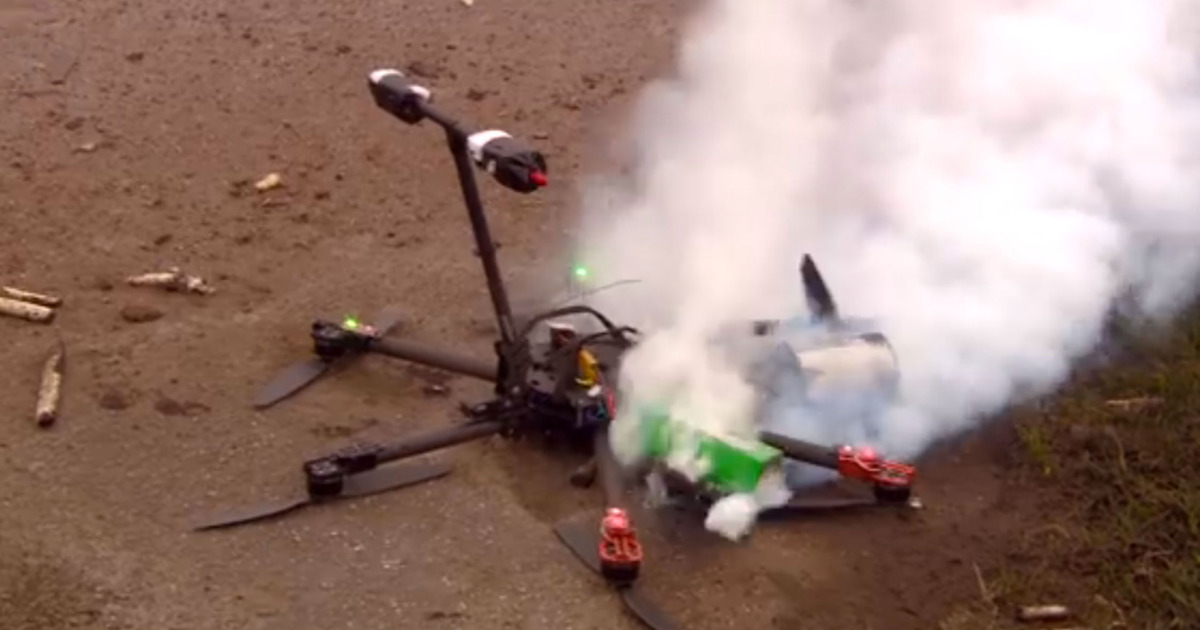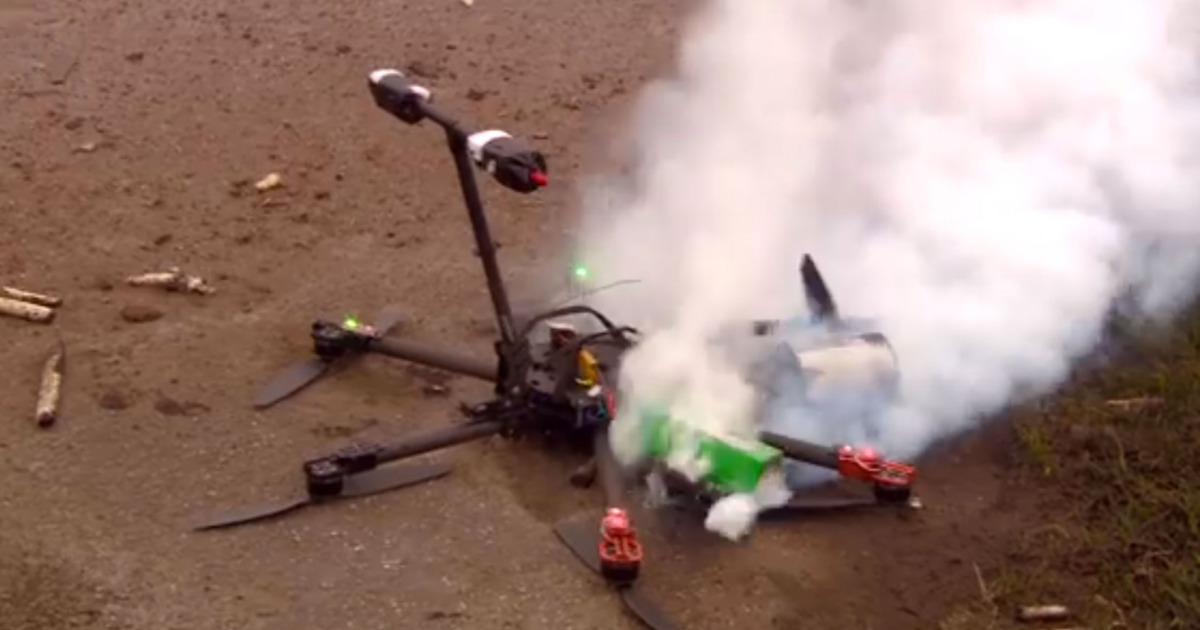Drone crashes in Paris: A seemingly futuristic concern has become a surprisingly frequent reality. This isn’t just about malfunctioning machines; it’s a story woven with threads of technology, human error, regulation, and the ever-evolving relationship between innovation and urban life. We’ll explore the recent history of Parisian drone incidents, delve into the causes behind them, and examine the steps being taken—and that should be taken—to prevent future accidents.
From technical glitches to pilot mistakes and the impact of weather, we’ll unravel the complexities surrounding these events. We’ll also look at the public’s perception, the role of the media, and the economic and social ripples created by these incidents. Ultimately, we aim to provide a clear picture of the current situation and offer insights into potential solutions for a safer future for drones in the City of Lights.
Recent Drone Incidents in Paris
Paris, a city renowned for its iconic landmarks and bustling atmosphere, has also seen its share of drone-related incidents in recent years. These incidents highlight the increasing need for stricter regulations and safety protocols concerning drone operation in densely populated urban areas. This section details several notable drone crashes in Paris over the past five years, focusing on location, drone type, and resulting consequences.
Timeline of Significant Drone Crashes in Paris (2019-2023)
Compiling a precise timeline ofall* drone crashes in Paris over the past five years proves challenging due to inconsistent public reporting. Many smaller incidents may go unreported or receive minimal media coverage. However, the following list details some of the more significant incidents that have been documented. Note that due to data limitations, specific drone models and manufacturers are not always available in public reports.
- October 2020: A drone crashed near the Eiffel Tower, causing minor damage to a nearby building. Reports suggest the drone was a consumer-grade quadcopter, possibly a DJI Phantom series, though this is unconfirmed. No injuries were reported.
- June 2022: A larger, multirotor drone crashed into a residential building in the 19th arrondissement. The cause of the crash remains undetermined, but speculation points to potential mechanical failure or pilot error. While significant property damage occurred, fortunately, no one was injured.
- March 2023: A small drone, possibly a DJI Mavic, impacted the Louvre Museum’s grounds. The incident caused minimal damage, and the operator was swiftly apprehended by authorities. This highlights the increasing security measures surrounding sensitive locations in the city.
Locations and Impacts of Drone Crashes
The locations of these incidents underscore the potential risks associated with drone operation near densely populated areas and significant landmarks. The crashes near the Eiffel Tower and the Louvre Museum, for instance, highlight the vulnerability of these high-profile tourist attractions to accidental damage. The incident in the 19th arrondissement emphasizes the risks to residential areas, even if they aren’t directly near major landmarks.
The lack of consistent reporting makes pinpointing exact locations for all incidents difficult.
Types of Drones Involved and Resulting Damage
The drones involved in these incidents ranged from small consumer-grade quadcopters to larger, more powerful multirotor models. While specific models are not always publicly available, the incidents demonstrate the potential for damage caused by even smaller drones. The extent of the damage varied, from minor property damage to more significant structural issues, as seen in the 2022 incident in the 19th arrondissement.
Drone crashes in Paris are becoming increasingly concerning, highlighting the need for better safety regulations. This reminds me of a similar incident, the orlando drone show accident , which underscored the importance of thorough pre-flight checks and operator training. Learning from these events, like the Orlando mishap, is crucial to preventing future drone crashes in Paris and other cities worldwide.
Fortunately, serious injuries have not been widely reported in these incidents. However, the potential for harm remains significant, especially in areas with high pedestrian traffic.
Causes of Drone Crashes in Paris
Drone crashes in Paris, like elsewhere, stem from a complex interplay of factors. Understanding these causes is crucial for improving drone safety and preventing future incidents. This section delves into the technical, human, and environmental elements contributing to these unfortunate events.
Technical Malfunctions
Technical issues can significantly impact drone stability and operation. Malfunctioning components, such as faulty motors, propellers, or electronic speed controllers (ESCs), can lead to loss of control and subsequent crashes. Battery failures, resulting in sudden power loss mid-flight, are another common cause. Furthermore, glitches in the drone’s flight control system, possibly due to software bugs or hardware defects, can cause unexpected maneuvers and crashes.
So, those drone crashes in Paris got everyone thinking about safety, right? It makes you wonder about the logistics of widespread drone use, especially when you consider places like the amazon drone delivery locations and how they’re managing things. Hopefully, Paris can learn from any issues encountered in those other locations to improve its own drone safety regulations.
In some cases, inadequate pre-flight checks might overlook these critical issues before takeoff. For instance, a crack in a propeller blade, unnoticed during inspection, could lead to a catastrophic failure in flight.
Human Error
Human error is a significant factor in many drone accidents. Inexperienced pilots might lack the skills to handle unexpected situations, such as strong winds or sudden malfunctions. Negligence, such as failing to perform proper pre-flight checks or disregarding safety guidelines, can also contribute to crashes. For example, a pilot flying too close to buildings or other obstacles, without sufficient awareness of their surroundings, might cause a collision.
Similarly, exceeding the drone’s operational limits, such as flying beyond its maximum range or in adverse weather conditions, increases the risk of accidents. Overconfidence in one’s piloting skills can lead to risky maneuvers that exceed the drone’s capabilities.
Weather Conditions
Parisian weather, with its variable wind speeds and occasional rain, significantly impacts drone stability. Strong gusts of wind can easily push a drone off course, especially smaller models with less powerful motors. Rain can affect the drone’s electronics, causing malfunctions or even short circuits, leading to a loss of control. Heavy rain can also increase the drone’s weight, reducing its maneuverability and increasing the likelihood of a crash.
Conversely, unexpectedly calm weather might lull a pilot into a false sense of security, leading to riskier flight choices. For instance, a sudden change in wind direction during a flight could overwhelm an inexperienced pilot’s ability to correct the drone’s trajectory.
Air Traffic and Obstacles, Drone crashes in paris
The presence of air traffic and various obstacles within Paris’s dense urban environment poses a considerable challenge to drone operation. Collisions with birds, buildings, or other structures are potential hazards. Furthermore, interference with other radio signals, such as those used by other drones or communication devices, can disrupt the drone’s control signals, resulting in loss of control. The proximity of significant landmarks, such as the Eiffel Tower, necessitates meticulous flight planning and adherence to strict safety regulations to avoid collisions.
In densely populated areas, the risk of unintended collisions with people or objects is amplified, demanding increased pilot vigilance and precise control.
Regulatory and Safety Measures
Drone operation in Paris, like many major cities, is subject to a complex web of regulations designed to balance technological innovation with public safety and airspace management. These rules cover everything from registration and licensing to operational restrictions in specific zones. Understanding and adhering to these regulations is crucial for safe and legal drone flights.Existing regulations concerning drone operation within Paris are primarily based on national French regulations, which are further supplemented by local ordinances.
These rules often restrict flight altitudes, distances from sensitive areas (airports, monuments, crowds), and operating hours. Specific permissions or authorizations might be required for commercial drone operations or flights in designated restricted zones. Penalties for non-compliance can range from fines to drone confiscation. The French Directorate-General for Civil Aviation (DGAC) is the primary authority responsible for enforcing these regulations.
Existing Drone Regulations in Paris
Drone pilots in Paris must adhere to national French regulations, including registration requirements for drones exceeding a certain weight. Flights are generally prohibited near airports, military installations, and other sensitive locations. Maximum altitudes and distances from crowds are also strictly regulated. Night flights are typically restricted unless specific authorizations are obtained. Specific no-fly zones, frequently updated, are often imposed around major events or for public safety reasons.
Operators are responsible for maintaining awareness of these ever-changing restrictions.
Proposed Improvement to Drone Safety Protocols
A significant improvement to current drone safety protocols in Paris could involve the implementation of a comprehensive, real-time airspace management system. This system would integrate data from various sources, including air traffic control, weather forecasts, and drone flight plans, to provide pilots with dynamic alerts and warnings about potential hazards. The system could also include geofencing capabilities, automatically preventing drones from entering restricted areas.
Such a system would require significant investment in technology and infrastructure, but the potential benefits in terms of safety and operational efficiency would be substantial. Similar systems are already being developed and implemented in other major cities globally, offering valuable lessons and best practices. For example, London’s implementation of a similar system has led to a noticeable decrease in drone-related incidents.
Recommendations for Drone Pilots to Mitigate Crash Risks
Before undertaking any drone flight in Paris, careful pre-flight planning is essential. This includes thoroughly checking the weather conditions, verifying the legal flight parameters for the chosen location, and ensuring the drone’s battery is fully charged. Pilots should always maintain visual line of sight with their drone and avoid flying in crowded areas or near obstacles. Regular maintenance and inspection of the drone are crucial to prevent malfunctions.
Familiarizing oneself with the latest regulations and updates from the DGAC is also paramount. Furthermore, understanding and practicing emergency procedures, such as safely landing the drone in case of a malfunction, is critical for accident prevention.
Comparison of Drone Safety Regulations in Major European Cities
| City | Registration Requirements | Altitude Restrictions | No-Fly Zones | Licensing/Permissions |
|---|---|---|---|---|
| Paris (France) | Required above a certain weight | Variable, often restricted | Numerous, dynamically updated | Required for commercial operations, potentially for specific areas |
| London (UK) | Required above a certain weight | Generally restricted | Extensive, including airports and central London | Required for commercial operations, potentially for specific areas |
| Berlin (Germany) | Required above a certain weight | Generally restricted | Near airports and sensitive sites | Required for commercial operations, potentially for specific areas |
| Rome (Italy) | Required above a certain weight | Variable, often restricted | Near historical sites and airports | Required for commercial operations, potentially for specific areas |
Public Perception and Media Coverage

Public reaction to drone incidents in Paris, particularly those involving crashes, has been a complex mix of fear, fascination, and frustration. The scale of the reaction often depends on the location of the crash, the extent of any damage or injury, and the perceived intent behind the drone’s operation. Media coverage plays a significant role in shaping this public perception.Media portrayals of drone crashes in Paris have varied considerably.
Some reports focus on the potential dangers of unregulated drone use, highlighting the risk to public safety and infrastructure. Others might emphasize the technological marvel of drones, contrasting the incident with the overall benefits of the technology. Sensationalist reporting, focusing on the dramatic aspects of a crash, is also common, potentially overshadowing discussions about safety regulations and responsible drone operation.
Media Influence on Drone Safety Regulations and Public Awareness
Media coverage significantly influences both drone safety regulations and public awareness. Negative reporting, especially after high-profile incidents, can pressure authorities to tighten regulations and increase enforcement. For instance, a drone crash near a major Parisian landmark might trigger stricter airspace restrictions or licensing requirements. Conversely, balanced reporting that educates the public about safe drone operation can improve public understanding and encourage responsible use.
The media’s role in shaping public discourse is undeniable; a consistent stream of negative news stories could foster a climate of fear and distrust towards drone technology, even if the overall risk is relatively low. Conversely, positive and informative reporting can foster acceptance and promote responsible use.
Framing of Drone Incidents and Public Perception of Drone Technology
The way drone incidents are framed by the media profoundly affects public perception of drone technology. If incidents are presented as isolated events caused by user error or negligence, the public may be more likely to view drones as generally safe. However, if the media consistently frames drone crashes as evidence of inherent technological flaws or a lack of adequate regulation, this can lead to widespread public apprehension.
For example, a news report emphasizing a drone crash as a result of a malfunctioning GPS system might lead people to question the reliability of drone technology as a whole, while a report emphasizing reckless pilot behavior might instead encourage better training and regulation. The narrative chosen by the media, therefore, plays a crucial role in shaping public opinion and influencing the future of drone technology.
Technological Advancements and Mitigation Strategies

The increasing use of drones in urban environments like Paris necessitates the development and implementation of advanced technologies to mitigate the risk of crashes. These technological advancements focus on enhancing drone safety, improving navigation systems, and bolstering overall airspace management. The following sections detail some key areas of progress and their potential impact on reducing drone-related incidents.Improved drone technology is crucial to prevent future accidents.
Several advancements are being developed to make drones safer and more reliable. These technologies are addressing issues such as obstacle avoidance, GPS accuracy, and battery performance.
Obstacle Avoidance Systems
Modern drones are incorporating sophisticated obstacle avoidance systems, utilizing a combination of sensors like lidar, radar, and cameras. Lidar (Light Detection and Ranging) uses lasers to create a 3D map of the surrounding environment, allowing the drone to identify obstacles and navigate around them. Radar provides longer-range detection capabilities, particularly useful in low-visibility conditions. Cameras, combined with advanced image processing algorithms, enable the drone to recognize and avoid objects in real-time.
These systems work in conjunction to provide a comprehensive level of obstacle awareness, reducing the likelihood of collisions with buildings, trees, or other airborne objects. For instance, the DJI Mavic 3 series utilizes a sophisticated system integrating these technologies, significantly improving its ability to operate safely in complex environments.
Enhanced Battery Technology and Power Management
Battery technology is a critical factor in drone safety. Improved battery designs are focusing on increased energy density, longer flight times, and enhanced safety features. Lithium-ion batteries, currently the standard, are constantly being refined to improve their lifespan and reduce the risk of thermal runaway (a dangerous overheating condition that can lead to fires or explosions). Advancements in battery management systems (BMS) are also playing a crucial role, monitoring battery voltage, current, and temperature to prevent overcharging, over-discharging, and overheating.
Solid-state batteries, still under development, promise even greater safety and energy density, potentially eliminating the risk of thermal runaway altogether.
Drone Traffic Management Systems (DTMS)
Implementing a comprehensive DTMS in Paris is crucial for managing the increasing number of drones operating in the city’s airspace. A DTMS would act like an air traffic control system for drones, providing real-time tracking, communication, and conflict avoidance capabilities. This system would assign designated flight paths, monitor drone positions, and alert operators to potential conflicts, minimizing the risk of mid-air collisions.
A successful DTMS would require collaboration between drone manufacturers, regulatory bodies, and air traffic control authorities. Similar systems are being tested in other major cities worldwide, providing valuable insights for future implementation in Paris. For example, the concept of “virtual fences” within a DTMS can restrict drone flights to specific zones, reducing the risk of unauthorized flights near sensitive areas.
Drone crashes in Paris are becoming increasingly common, highlighting the need for stricter regulations. One particularly noteworthy incident, detailed in this report on a drone crash in Paris , involved a near-miss with a landmark building. Understanding the causes behind these incidents, as seen in this specific case, is crucial for improving drone safety and preventing future accidents in Paris.
Potential Future Technological Solutions
The following are potential future technological solutions that could further enhance drone safety and prevent crashes:
- AI-powered autonomous emergency landing systems: These systems could automatically land a drone safely in the event of a malfunction or loss of control.
- Redundant flight control systems: Implementing backup systems would ensure that the drone can maintain control even if one system fails.
- Improved communication protocols: More robust and reliable communication systems would minimize the risk of signal loss or interference.
- Advanced geofencing technology: This would allow for more precise control over where drones can fly, preventing them from entering restricted areas.
- Drone identification and tracking systems: These systems would allow authorities to identify and track drones, improving accountability and facilitating investigations in the event of a crash.
Economic and Social Impacts: Drone Crashes In Paris

Drone crashes in Paris, while relatively infrequent, carry significant potential for economic and social disruption. The consequences extend beyond the immediate damage, impacting businesses, public trust, and the city’s vital tourism sector. Understanding these impacts is crucial for developing effective preventative measures and mitigating future risks.
Economic Consequences of Drone Crashes
Drone crashes can lead to substantial economic losses. For example, a drone striking a building could cause damage requiring expensive repairs, potentially impacting the building’s occupancy and rental income. Imagine a drone colliding with a luxury hotel in the heart of Paris; the cost of repairing structural damage, replacing shattered windows, and dealing with potential guest compensation could easily reach hundreds of thousands of euros.
Furthermore, business disruption caused by a crash, such as temporary closures for safety inspections or repairs, can result in significant lost revenue for affected businesses, especially smaller enterprises with limited financial reserves. A drone crashing into a high-end boutique, for instance, could cause not only immediate damage but also lost sales during the period needed for repairs and the potential impact on future sales due to negative publicity.
Social Impacts of Increased Drone Use and Safety Concerns
The increasing use of drones in urban environments like Paris raises legitimate social concerns. Public safety is paramount; the risk of injury or death from a falling drone, although statistically low, is a real concern that can erode public confidence. Increased drone activity also raises privacy issues. The potential for unauthorized surveillance or the accidental capture of private moments fuels anxieties, particularly in densely populated areas like Paris.
This unease can manifest in public opposition to drone use, hindering the development of beneficial drone-related industries and services.
Influence of Drone Incidents on Public Trust
Public trust in drone technology is directly influenced by the frequency and severity of drone incidents. Each crash, especially those involving injury or significant property damage, fuels negative perceptions and contributes to a climate of fear and distrust. This can lead to stricter regulations, hindering innovation and the development of beneficial drone applications. Conversely, a consistent track record of safe drone operations and effective incident response can build public confidence and support for wider drone integration.
The media’s role in shaping public perception is also significant; negative reporting of drone crashes can disproportionately impact public opinion.
Potential Impact of a Major Drone Crash on Tourism
Imagine a scenario: a large, heavy-lift drone carrying a substantial payload malfunctions and crashes into a major Parisian landmark like the Eiffel Tower. The immediate impact would be significant property damage, requiring extensive and costly repairs. Beyond the direct financial costs, the incident would generate extensive negative media coverage worldwide, potentially impacting Paris’s reputation as a safe and attractive tourist destination.
The visual impact of damage to such an iconic structure would be deeply unsettling for potential visitors, leading to cancellations of trips and a decline in tourist revenue. The long-term effects could be substantial, with a lingering negative perception affecting tourism numbers for months or even years following the incident. The psychological impact on tourists already in Paris at the time of the incident, witnessing the event or its aftermath, would be significant, potentially causing fear and anxiety and affecting their overall experience.
The resulting decline in tourism could have far-reaching economic consequences for Paris, impacting hotels, restaurants, shops, and other businesses reliant on tourism revenue.
Ending Remarks

Drone crashes in Paris highlight a crucial intersection of technological advancement and urban safety. While technological solutions like improved obstacle avoidance and drone traffic management systems offer promising avenues for mitigation, the human element remains a significant factor. Ultimately, a multi-pronged approach—combining stricter regulations, enhanced pilot training, and continuous technological innovation—is essential to minimize the risk of future incidents and ensure the responsible integration of drones into Parisian airspace.
The safety of citizens and the preservation of this iconic city’s beauty must remain paramount.
Question & Answer Hub
What are the most common types of drones involved in Paris crashes?
While specifics vary by incident, consumer-grade drones used for recreational purposes or photography are frequently involved. Larger, commercial drones are less frequently implicated in reported crashes.
How do Parisian drone regulations compare to other major European cities?
Regulations vary across cities. Paris, like many others, requires registration and licensing for certain drone operations, restricts flight near sensitive areas, and mandates adherence to altitude limits. A detailed comparison would require a dedicated study, as regulations are constantly updated.
What is the public sentiment toward drones in Paris following these incidents?
Public sentiment is likely mixed. While some might view drones as a nuisance or a safety risk after crashes, others might see their potential benefits (e.g., in delivery services or infrastructure monitoring). Media coverage significantly shapes this perception.
Are there any insurance requirements for drone operation in Paris?
This information is subject to change. It’s crucial to check the current regulations with the relevant French aviation authorities. Third-party liability insurance is often a requirement for professional drone operation, but the specific details should be verified.
